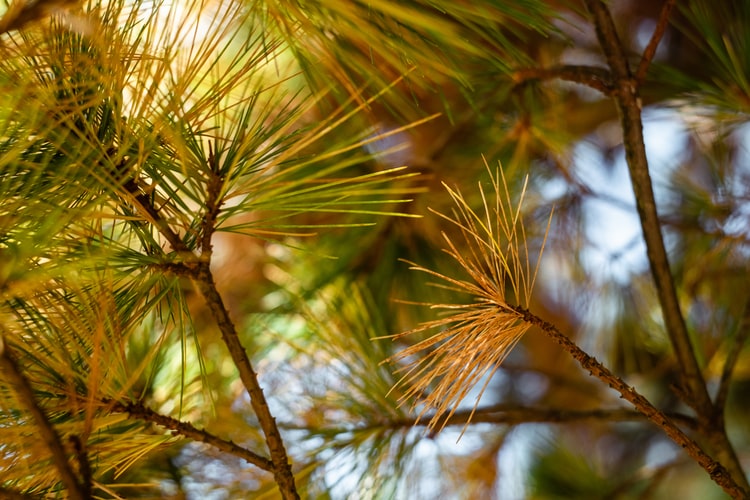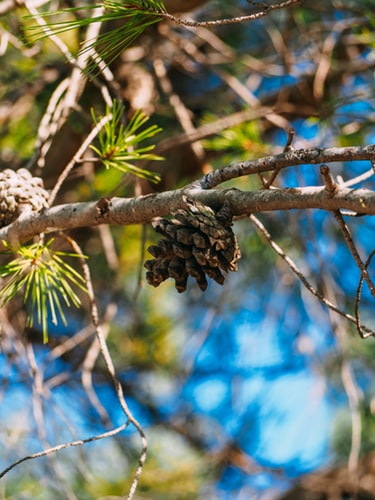Uses

Its resin used for sealing wax and for rubbing on the bows of violins. It was also used to seal the inside of beer barrels and boats. Vets used the resin because of its antiseptic properties. The wood used to be used for pit props and rough building work. More recently it has been used for railway sleepers and telegraph poles.
Myths and legends
The tree features in many Ancient Egyptian and Greek legends as well as being very important to the Druids. They burnt large bonfires of pine at the Winter Solsitice which became to fore runner of the Yule log. Many legends around the world connect it with birth, maybe because storks choose it for their nests.

Medicinally

The buds cones and needles have been used to heal breathing difficulties (such as bronchitis), skin diseases, toothache and green wounds.
Photo by Grant Ritchie on Unsplash
This information is purely for interest, any use of this as a medicine needs to be taken under the instruction and guidance of a registered herbal practitioner.
Medical disclaimer
This post is not intended to provide diagnosis, treatment or medical advice. Any mention of medicinal uses are for informational purposes only. The use of any herb or derivative is entirely at the reader’s own risk. The author of this post cannot be held liable for anyone using these medicines. It is strongly advised that any usage is in consultation with a registered herbalist and/or qualified doctor
Check out this link for identification purposes: https://www.woodlandtrust.org.uk/trees-woods-and-wildlife/british-trees/a-z-of-british-trees/scots-pine/
« Back to blog page